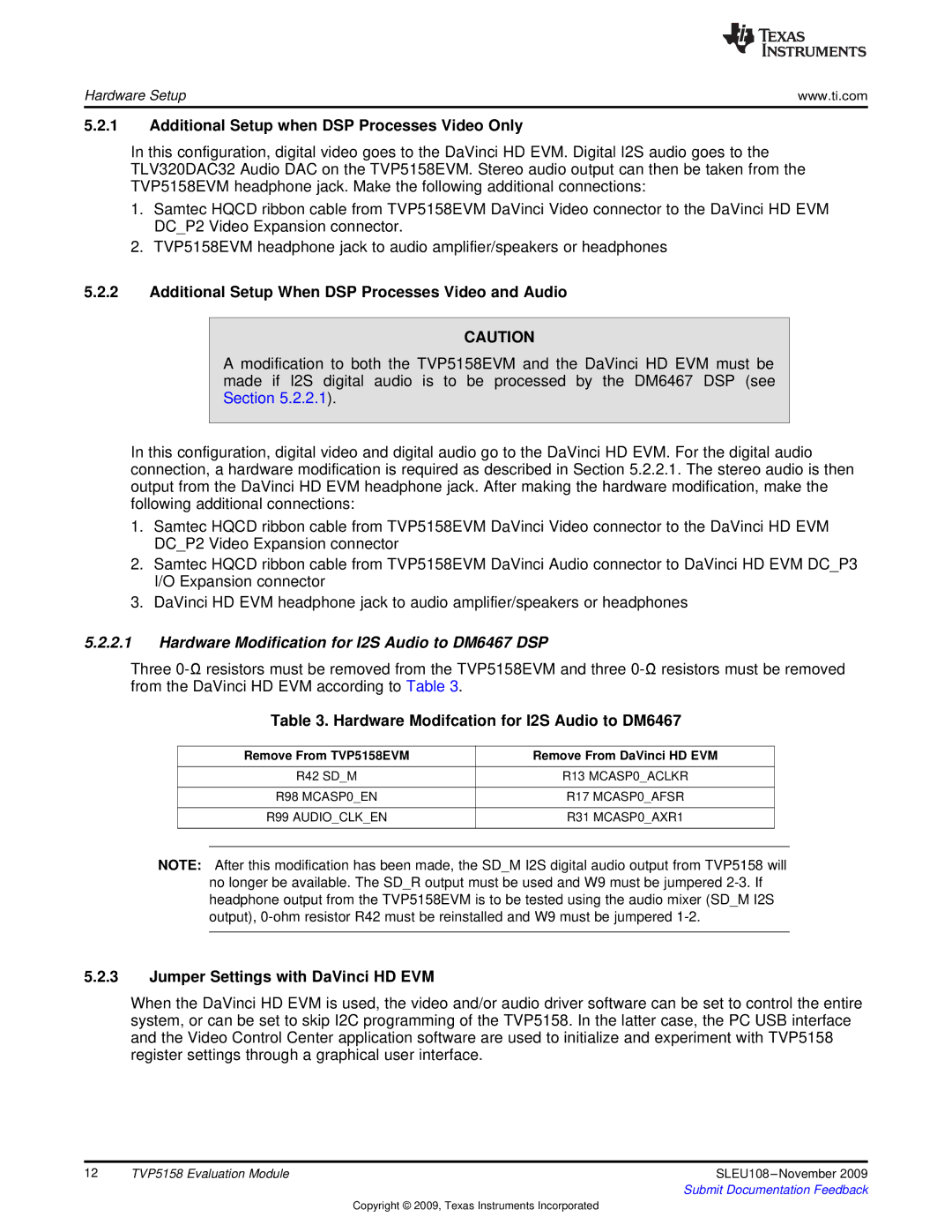TVP5158 specifications
The Texas Instruments TVP5158 is a highly versatile and efficient video decoder designed for a range of video processing applications. It serves as an excellent solution for converting analog video signals into digital formats for further processing. The device is commonly utilized in surveillance systems, video conferencing equipment, and various multimedia applications where reliable and high-quality video output is necessary.One of the primary features of the TVP5158 is its ability to accept multiple video formats, including NTSC, PAL, and SECAM. This flexibility makes it suitable for a global market where different standards are employed. The device can handle up to four composite video inputs, allowing users to connect multiple sources and switch between them as needed seamlessly. The integrated multiplexing capability makes the TVP5158 an excellent choice for applications that require real-time processing of various video sources.
The TVP5158 also incorporates advanced noise reduction technology, which enhances the quality of the output video by minimizing artifacts and disturbances that may affect the viewing experience. This feature is particularly beneficial in situations where video signals may be degraded due to environmental factors. Additionally, the chip includes capabilities for automatic gain control, which helps adjust the signal levels to maintain consistent output quality.
Another significant characteristic of the TVP5158 is its built-in color space conversion. The device can transform the incoming video signals from YCbCr to RGB or vice versa, ensuring compatibility with a wide range of display systems and digital video formats. This feature is essential for applications that work with various video standards and require high fidelity in color representation.
The TVP5158 is designed for low power consumption, making it ideal for battery-operated devices and systems where energy efficiency is crucial. Its small footprint and integration capabilities also allow for easier design and implementation within existing systems without requiring extensive space or additional components.
In summary, the Texas Instruments TVP5158 is a robust video decoder that offers a rich set of features, including support for multiple video formats, advanced noise reduction, automatic gain control, and color space conversion. Its low power requirements and compact design make it an attractive choice for a variety of applications, positioning it as a reliable solution for modern video processing needs.

